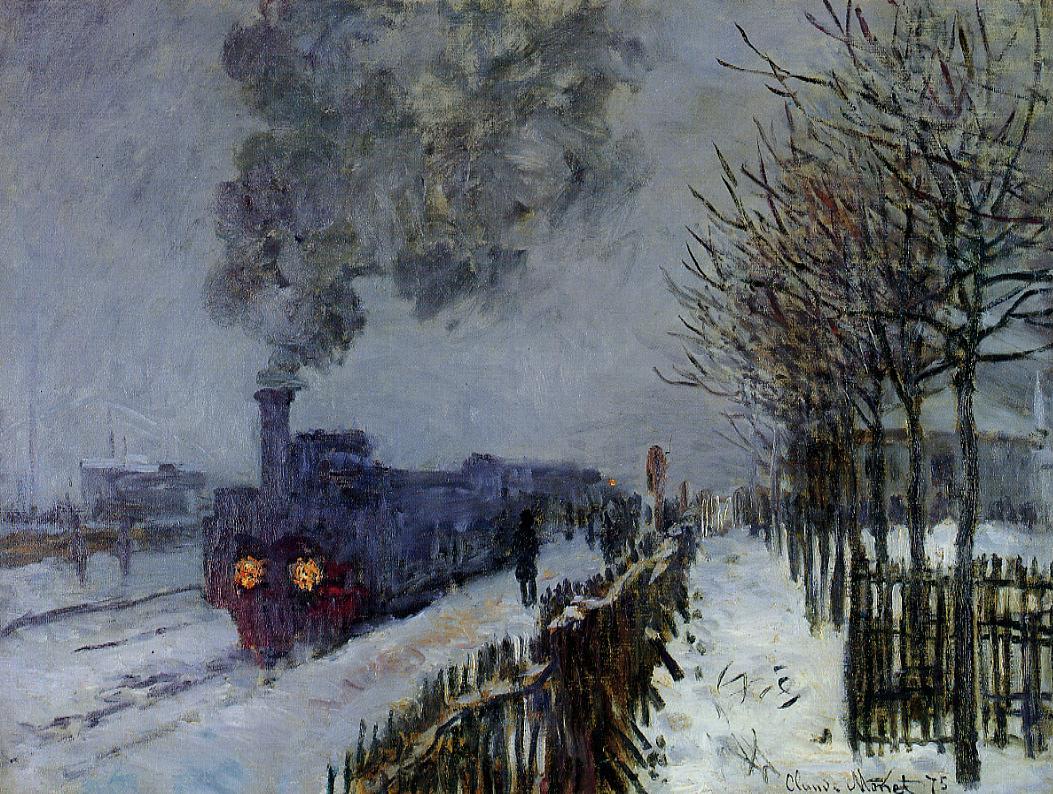Claude Monet painted The Train in the Snow in 1875. Although this work was not shown in an Impressionist exhibition, it reveals Monet's attraction to the convergence of nature and technology, a characteristic of the modern age that intrigued most of the artists of the circle. To Monet, the train -- with its speed and the smoke it expelled into the atmosphere — produced the qualities of constant visual change that drove artistic observations. This scene was painted in the railway station in Argenteuil, directly opposite Monet's home. Monet's Train in the Snow is a bit different than some of his other pieces as it combines elements of colour blending to create a solid image. This work depicts a train pulling into a snowy station. Unlike Impression, soleil levant this work clearly depicts an event and a location. The true stillness of the moment has been captured perfectly. The short brush strokes give texture to the wooden fence posts and to the smoke from the train. The setting of a winter day has also captured this sense of stillness. The lack of any sun gives this painting a timeless setting as if it could be at any time of day. The blending of different grays and light blues gives a sense of more colours to the sky than would normally be seen. Towards the vanishing point a small bright light can be seen perhaps a lantern or a street light signaling the arrival or departure of the train. Finally Monet unlike many of his contemporaries painted modernity. That is to say his contemporaries disliked the ideas of industrialisation or the contraptions of modern living. Monet's work here does not look back at some pastoral scene as the best time to life he states that now life among mans new inventions is the best and most interesting period in which to live.




Train in the Snow
oil on canvas • 23.2 × 30.7 in
 Claude Monet
Claude Monet